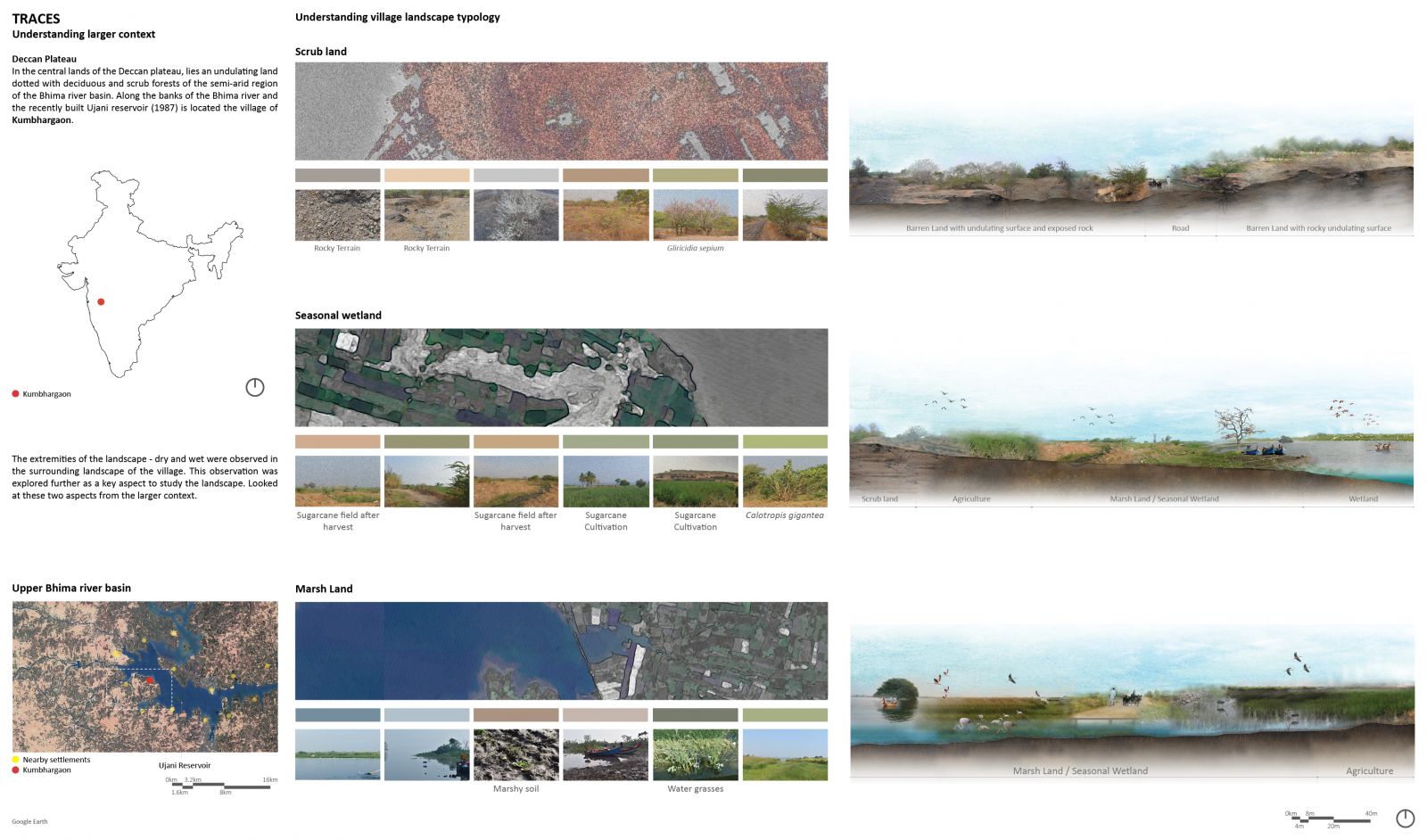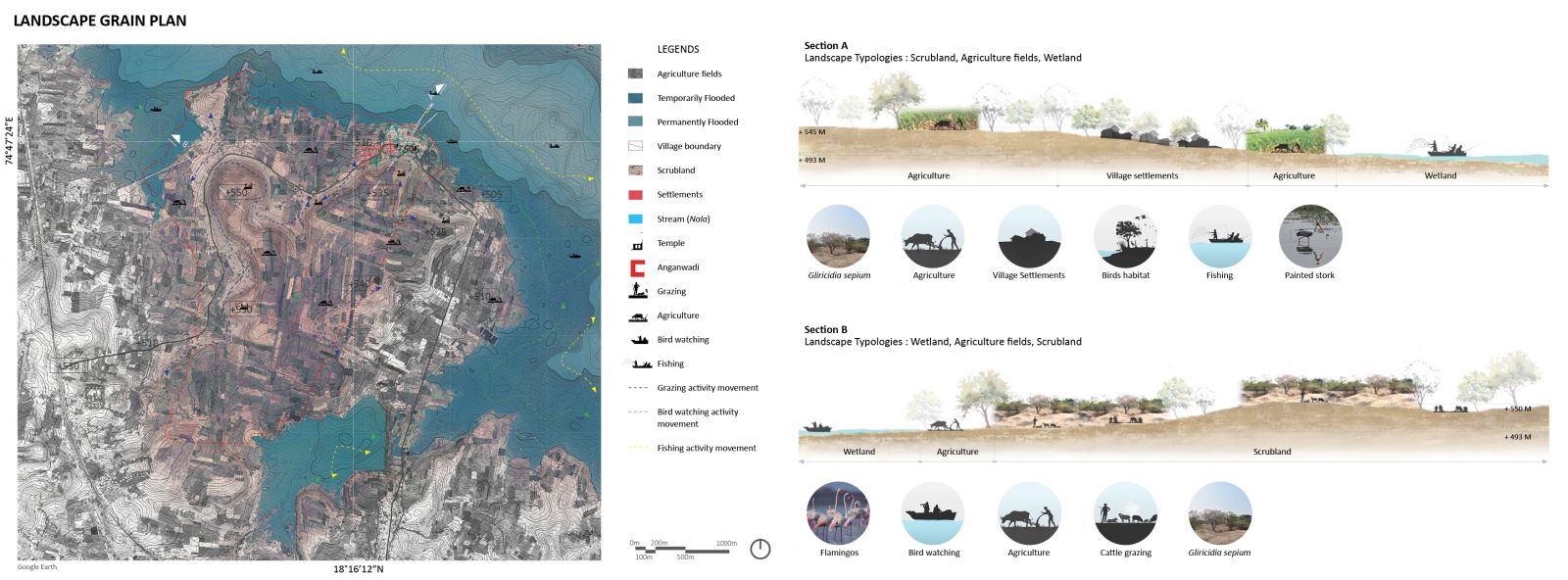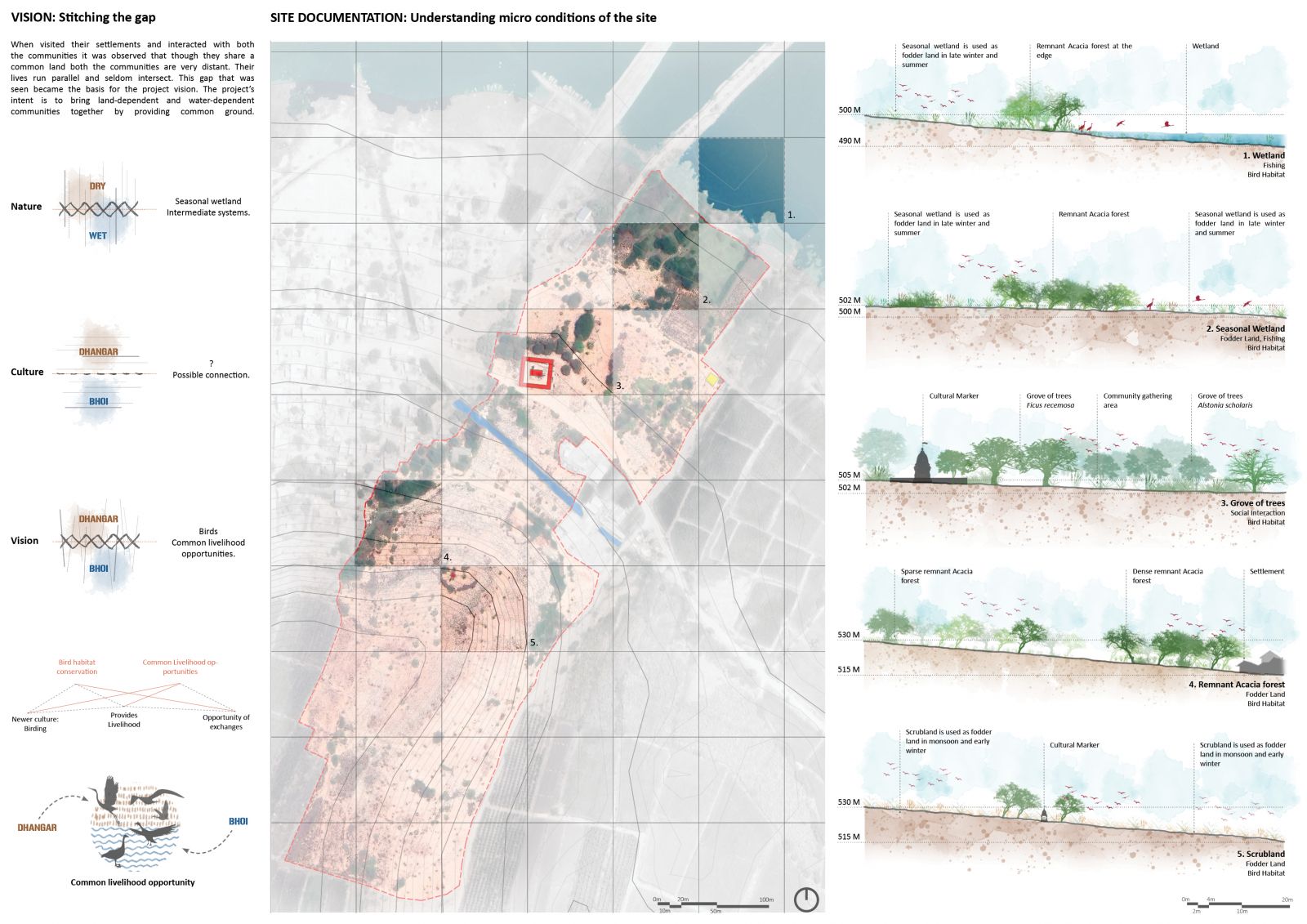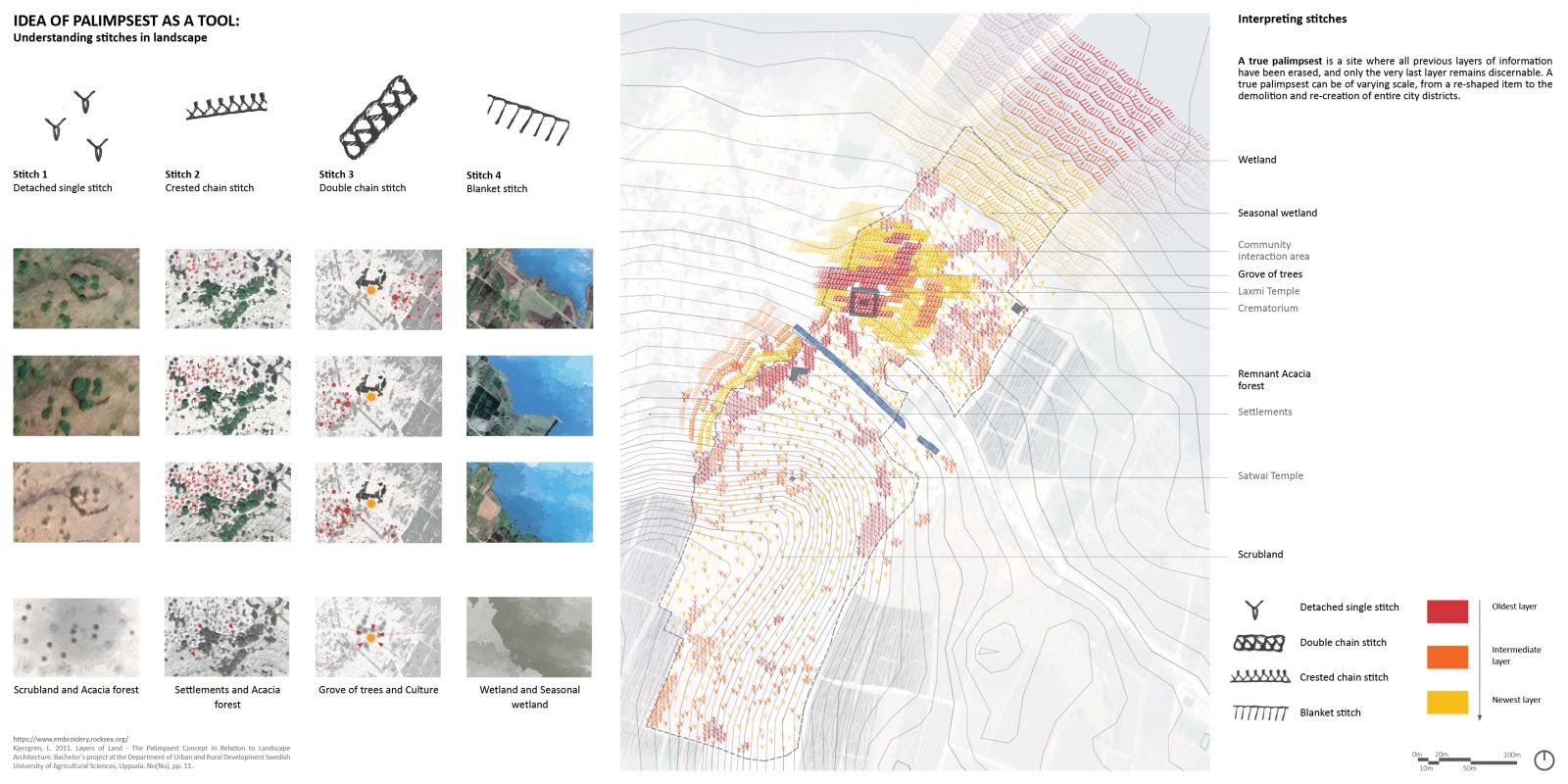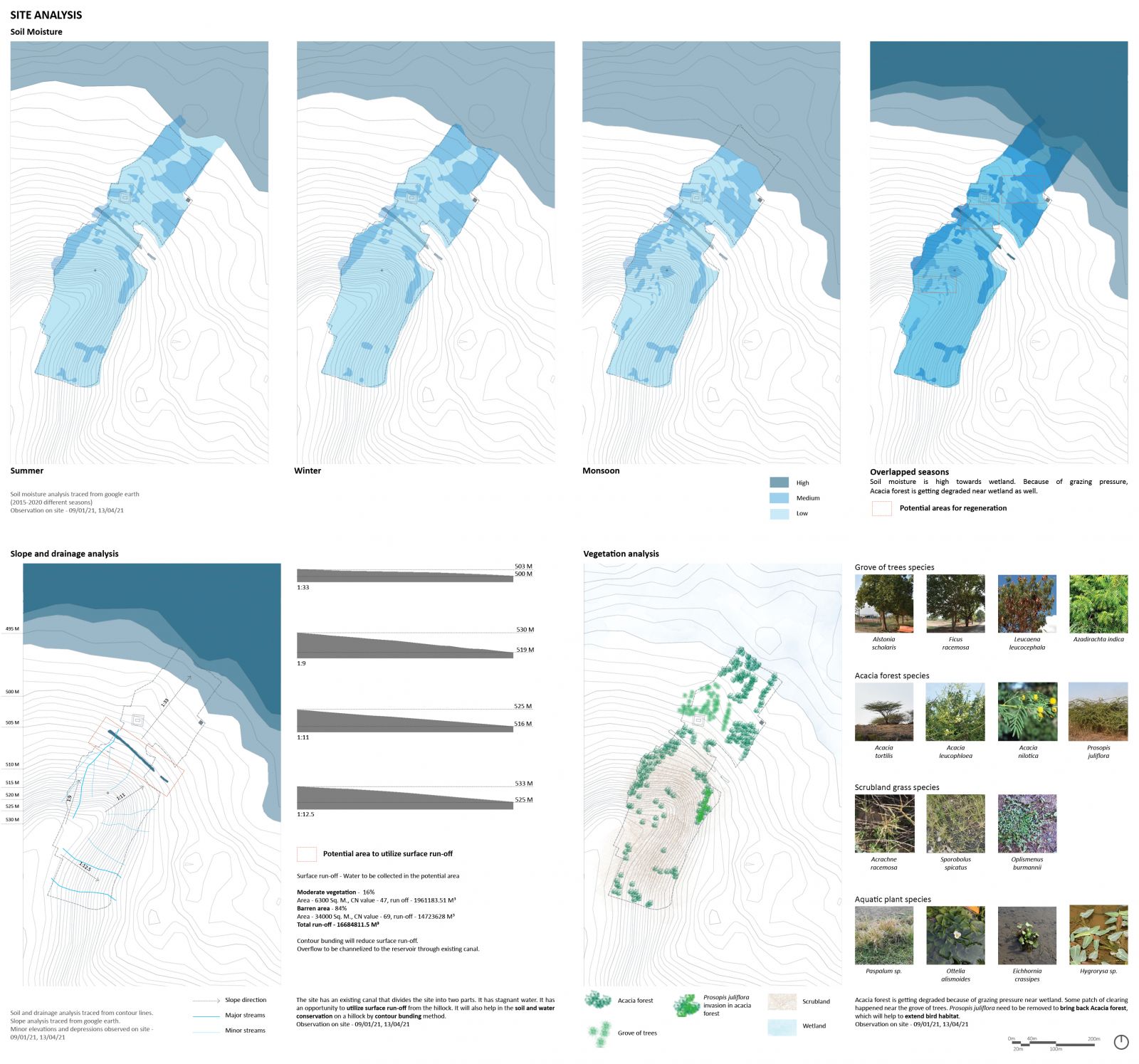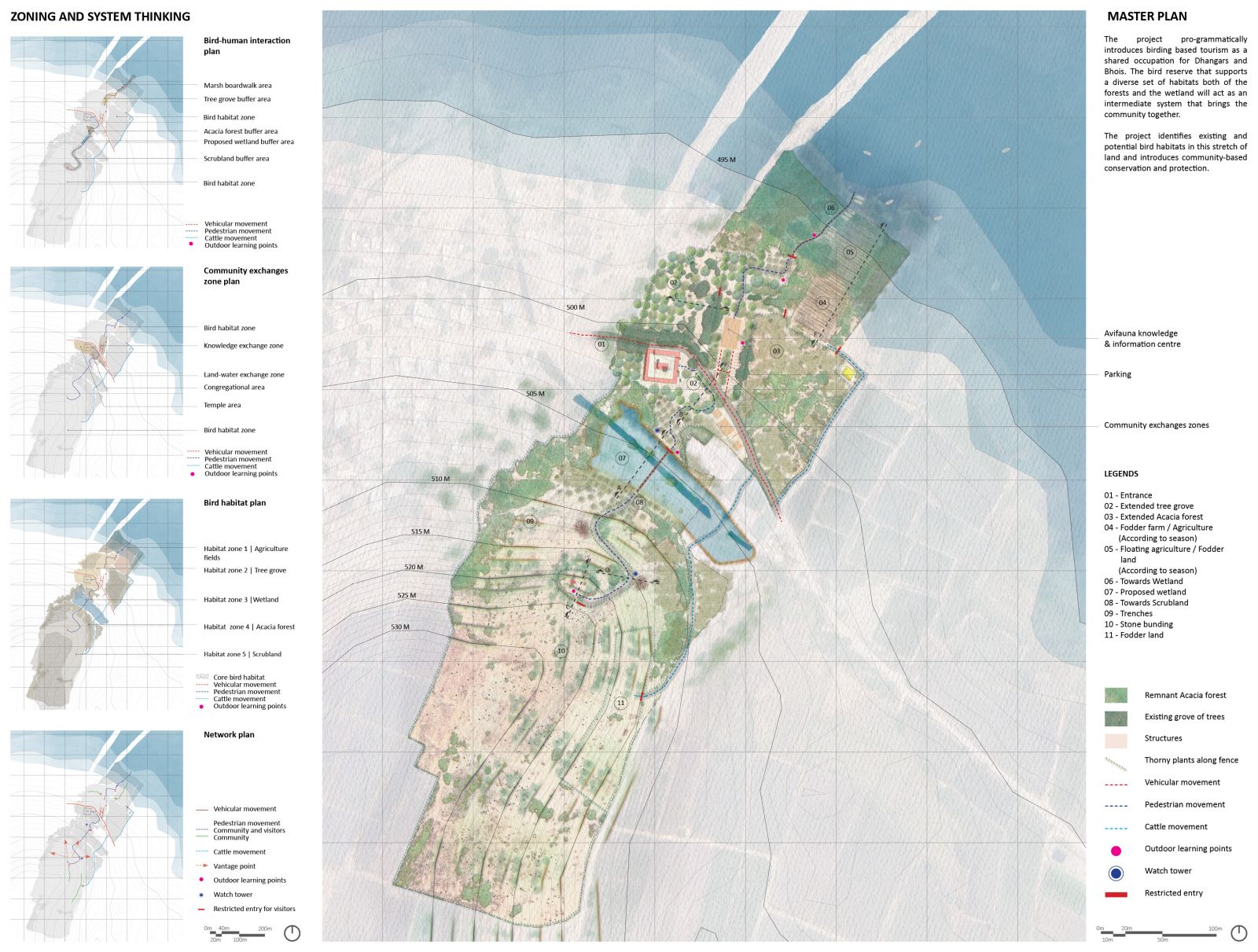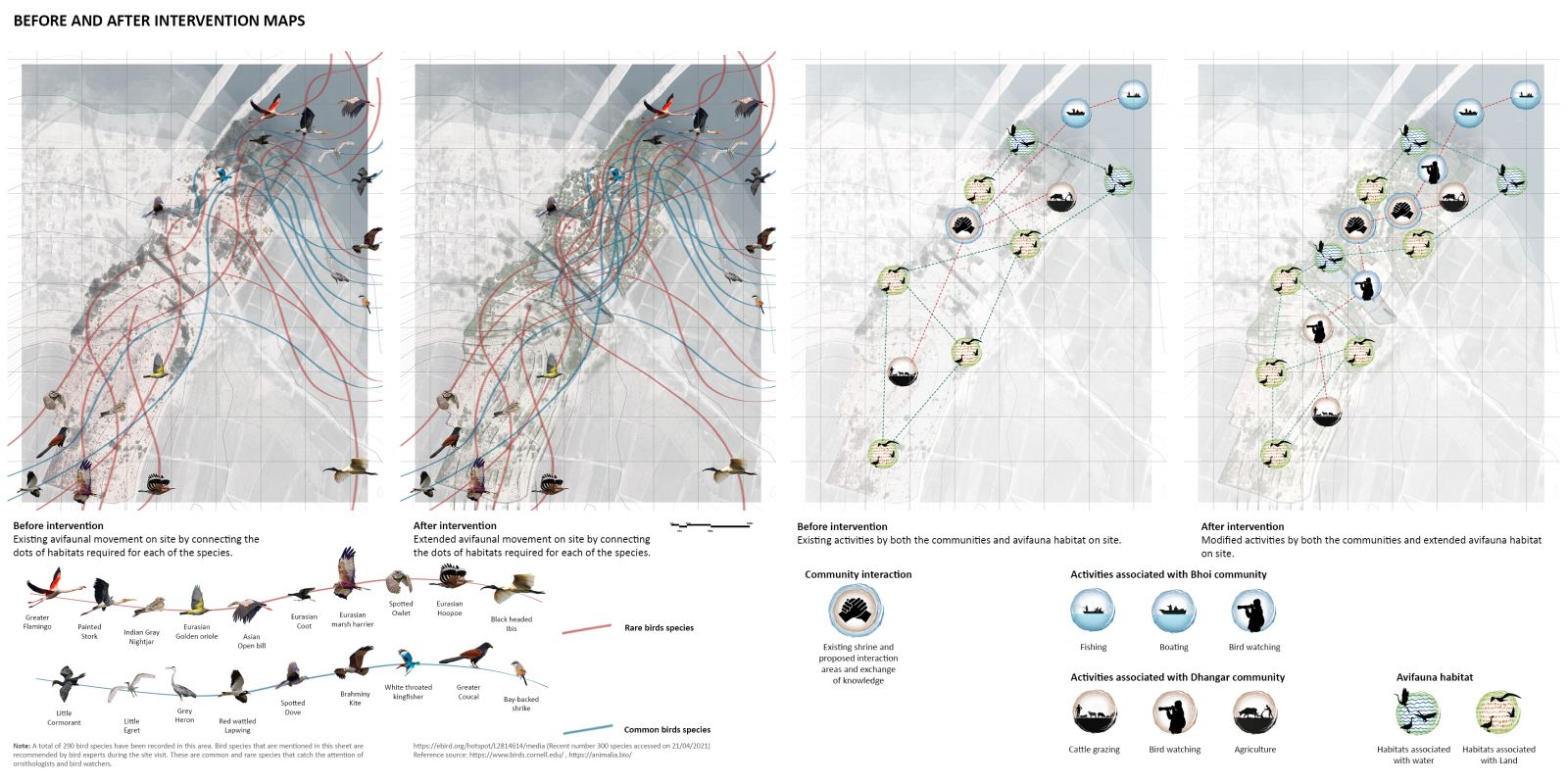Your browser is out-of-date!
For a richer surfing experience on our website, please update your browser. Update my browser now!
For a richer surfing experience on our website, please update your browser. Update my browser now!
In the central semi-arid region of the Bhima river basin of the Deccan plateau, and a recently built Ujani reservoir (1987) lies a village Kumbhargaon. The landscape of the place lies between the spells of extreme dry and wet cycles. Two communities, one of the ancient fisher folks, Bhois and the other of the semi-nomadic pastorals Dhangars reside here. Both communities have placed displacement and shift in ways of life and livelihood. When visited their settlements and interacted with both the communities it was observed that they share a common land, yet they are very distant. Stitching this gap within the communities of a place with a landscape intervention that brings them together is the key idea of the project. The modified ecology of the reservoir gave rise to leading to seasonal wetlands attract around 290 bird species to the place. The project programmatically introduces birding-based tourism as a shared occupation for Dhangars and Bhois. The bird reserve with community participatory tourism intends to support the diverse set of habitats of the forests and wetlands. This will culturally act as an intermediate system that has the potential to bring the community together. The project does not intend to promote reckless tourism but to rather promote community-owned and driven sensible tourism and habitat conservation by developing a dependency on the newly emerged birding culture.
View Additional Work